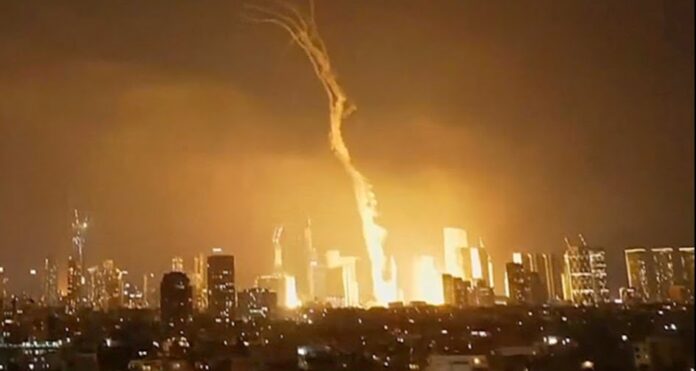Michael Clarke breaks down how Israel and Iran stack up as two of the region’s biggest military powers.
As tensions between Israel and Iran continue to flare, the question of military strength looms large. Military analyst Michael Clarke has dissected both nations’ capabilities, revealing a complex power balance shaped by technology, strategy, and vastly different military doctrines.
On paper, Iran’s military appears enormous. Its combined forces, including the regular army and Islamic Revolutionary Guard Corps (IRGC), boast roughly 610,000 personnel. In contrast, Israel’s military stands at about 170,000 active troops. But as Clarke stresses, sheer numbers tell only part of the story.
Iran’s strength lies in its manpower and asymmetric tactics. The IRGC, formed after the 1979 revolution, operates independently from the regular army and wields significant political influence. Tehran also commands powerful proxy networks across the region, including Hezbollah in Lebanon, the Houthis in Yemen, and various Shia militias in Iraq and Syria. These groups act as extensions of Iran’s reach, allowing it to project power without direct confrontation.
Yet when it comes to advanced weaponry, Israel holds a decisive edge. The Israeli Defence Forces (IDF) possess state-of-the-art military hardware, most of it domestically developed or supplied by the United States. Its air force is widely regarded as one of the world’s best, featuring a fleet of cutting-edge F-35 stealth fighters, F-15s, and F-16s, supported by highly advanced intelligence, surveillance, and reconnaissance systems.
Israel’s renowned air defence systems, including the Iron Dome, David’s Sling, and Arrow interceptors, offer formidable protection against missile attacks. These systems regularly intercept rockets launched from Gaza and could be deployed against Iranian ballistic missiles if hostilities escalate.
Iran’s missile programme, however, is the centrepiece of its military strategy. Tehran has amassed one of the world’s largest arsenals of ballistic and cruise missiles, capable of striking targets across the Middle East. Its Shahab-3, Sejjil, and Emad missiles have ranges exceeding 1,000 kilometres, putting Israeli cities, military bases, and strategic sites well within reach.
Clarke notes that Iran’s missile barrage could overwhelm even Israel’s advanced defences if launched in sufficient numbers. “Missile saturation is Iran’s way of negating Israeli superiority in precision strikes,” he explains.
Naval power offers another stark contrast. Israel’s navy is small but technologically sophisticated, operating advanced submarines believed to be capable of launching nuclear-armed cruise missiles. These submarines provide Israel with a powerful second-strike capability in case of a devastating attack.
Iran, meanwhile, focuses on asymmetric naval tactics in the Persian Gulf. Its fleet includes hundreds of small fast-attack boats, submarines, and drones capable of harassing commercial shipping and threatening global oil routes. Its naval forces are designed more for regional disruption than direct confrontation with superior navies.
Cyber warfare is a critical battleground where both nations excel. Israel is widely acknowledged as a global leader in cyber capabilities, having allegedly disrupted Iranian nuclear facilities and infrastructure multiple times. Iran, too, has launched successful cyberattacks against Israeli businesses and government networks, showing increasing sophistication.
Perhaps the most decisive factor, Clarke argues, lies in nuclear capabilities. While Israel has never officially confirmed its nuclear arsenal, it’s widely believed to possess dozens, possibly hundreds, of nuclear warheads. Iran denies seeking nuclear weapons, but Western intelligence agencies remain sceptical, particularly as Tehran expands its uranium enrichment.
“Israel’s nuclear deterrent casts a long shadow over any confrontation,” Clarke states. “It fundamentally alters the stakes for Iran.”
Ultimately, while Iran’s manpower and missile stockpiles pose significant threats, Israel’s technological edge, intelligence superiority, and nuclear deterrence offer a powerful counterbalance. Any conflict between these two rivals would be brutal, complex, and carry dangerous implications far beyond the Middle East.
